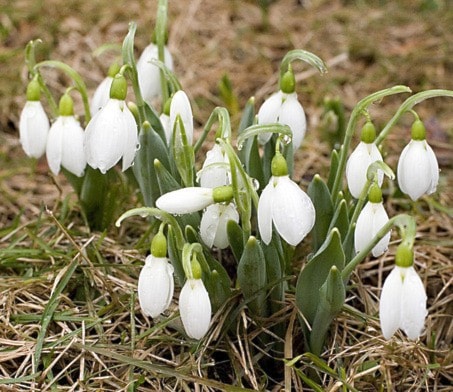Over 116 million Dutch flower bulbs have now made their way into Canadian garden stores, import warehouses and greenhouse coolers. As a matter of fact, Canada is the ninth largest Dutch bulb importing country in the world. I’m sure it would be no surprise if I were to tell you that tulips are the number one bulb we import. You might be interested to hear that gladiolas are right behind and then, way down in quantities but still important, are lilies, hyacinths, narcissus, irises, crocuses, amaryllis, dahlias, freesias and anemones. The high numbers of some of these bulbs may seem rather odd to the home gardener, but don’t forget, many of these bulbs such as lilies, irises and freesias are grown-on by greenhouse operators for cut flower production. It is, however, becoming more apparent to me each year that we are overlooking some of the very finest bulbs, and they are right under our noses.
We tend to overemphasize tulips, daffodils and hyacinths in our gardens, while ignoring other bulbs which are actually better long term investments. A visit to Keukenhof, Holland’s famous spring garden, opened my eyes to the use of minor bulbs. Muscari (grape hyacinths) were used very effectively as borders, underplantings and as drifts of colour under trees and shrubs. There are many varieties but ‘Muscari armeniacum’ is, by far, the most impressive for mass displays.
Muscari are hardy in all zones and will tolerate little or no water in summer. This makes them ideal for plantings under large trees where moisture is often a problem. They prefer full sun or partial shade. These bulbs look very effective when mass planted by themselves or used as a contrast with other spring blooming perennials, bulbs or flowering shrubs. Muscari are longlasting, have great weather tolerance, and they don’t look messy as do so many other bulbs when they finish flowering.
Most gardeners plant and enjoy lots of the standard yellow, white, blue and striped crocus, but the sweetly scented species varieties are being overlooked. Crocus chrysanthus provide us with some of the most beautiful and interesting crocus colours.
For a yearly repeat performance, the earliest bulbs to bloom are the yellow aconites (Eranthis hyemalis) and beautiful snowdrops. Both perennialize nicely and create a more lovely display year after year. The yellows and whites really pop in late winter, lifting our spirits and announcing that spring is on its way!
The old fashioned bluebells that so many European folks ask for are actually scillas or squills. All of them flower in clusters on leafless stalks and have either bell-shaped or star-like flowers. I like them best planted in informal groupings among shrubs, deciduous trees or low-growing perennials. They are great in pots too and you know, scillas make lovely cut flowers for tiny bouquets. Scilla siberica seems to be the most popular because of its intense blue, three to six inch flower spikes. If you can find it, Scilla tubergeniana is also popular because it blooms very early with the snowdrops.
The real sleeper in all the minor bulbs is Anemone blanda. These look for all the world like miniature daisies, and I was absolutely in awe when I saw how they were being used in Keukenhof Gardens. The variety called ‘White Splendor’ was used in massive borders and underplantings with virtually every type of tulip and narcissus which blooms during their long flowering period. Their white colour tended to lift all the other colours, and when contrasted with the rich green lawns, they were sensational. Anemone blanda comes in many colours, but the new varieties ‘Blue Shades’, ‘Pink Star’ and ‘White Splendor’ have lovely bright colours. The mixed varieties look great too. You will find these anemones most pleasing when you plant them under Japanese azaleas, dwarf rhododendrons and Japanese maples.
There are still many of these great little minor bulbs we have yet to discover, but I suggest you give the ones I’ve mentioned a try. You won’t be disappointed.
